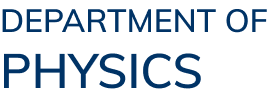ABSTRACT
Topological superconductors are highly sought-after due to their connections to Majorana fermions and the possibility of constructing fault-tolerant qubits from these materials for quantum computation. Nematic superconductivity refers to the spontaneous breaking of rotational crystalline symmetry due to the order parameter symmetry of a superconductor. Searching for nematic superconductivity is a method of realizing a topological superconductor. Nematic superconductivity has been observed previously in several materials including doped Bi2Se3, monolayer NbSe2, and other materials.
Bi2Te3 and Sb2Te3 are topological insulators that host surface states in their Dirac cones. FeTe is a parent compound of various iron-based superconductors, but it itself is not superconducting. When the two types of materials are paired together, a two-dimensional superconducting layer arises from the interface between the two layers of materials. This superconductivity is likely linked to the magnetic properties of FeTe.
This study mainly conducts field-angle-resolved anisotropy measurements of magnetoresistance and magnetization. By rotating the direction in which the in-plane magnetic xii field is applied to the superconducting interface, upper and lower critical field measurements (Hc1 and Hc2) show no anisotropy in the Bi2Te3/FeTe samples, suggesting that the heterostructure has an isotropic s-wave pairing symmetry. However, the same type of measurements for Sb2Te3/FeTe samples show a two-fold rotational symmetry that fits the theoretical model of a p-wave nematic superconductor well. If the Sb2Te3/FeTe structure hosts a nematic superconducting phase, this might indicate that the superconductivity may be extended into the topological insulator layer of Sb2Te3, potentially realizing a topological superconductor.
Nematic superconductivity is also investigated in the FeTe/MnTe heterostructure by conducting similar anisotropy experiments. Some evidence of nematicity is found, but more work is needed for more convincing arguments.
Other unusual properties such as the effects of dimensionality of the superconducting layer in the Bi2Te3/FeTe structure and chiral superconductivity in the Sb2Te3/FeTe structure are also investigated in this study.
